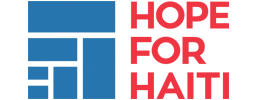 |
February 15, 2010
Gabion was transformed, early on after the earthquake, from a soccer stadium to an IDP (internally displaced peoples) camp. When I think of “camps,” images of miles and miles of refugees, dirt, makeshift housing, and generally unsanitary conditions come to mind. I’ve been conditioned to associate camps with terrible living conditions. Gabion is definitely not terrible. It’s not ideal – none of the people there want to live there – but it’s clean and relatively well managed. There is an organized food program, that Hope for Haiti has helped with support from Kids Against Hunger, and there’s a water supply on the premises. Really, it’s the heat more than anything else that makes life in Gabion hard. That, and the pain brought to the camp from Port au Prince. The IDPs living in Gabion are the minority of people who have traveled to the south who don’t have any family or friends to help support them. They’ve got nowhere else to go. And while there’s “only” around 150 people living there, they’re perhaps the loneliest people in Les Cayes. No family. No friends. No familiar surroundings to find comfort in. During the day, the heat makes staying in the tents unbearable, and people shrink next to the tiny slivers of shade. I’ve been trying to record as many stories from Gabion as I can, trying to preserve them, so that we don’t forget what they went through, what they’re still going through.
I first met Sophia a week ago. She was staying in a tent with a husband, wife, and 2 infants. She did not know any of them, had merely been grouped with them into a tent. Sophia is 13. When she was very little, she was “entered” into the Restavek system by her parents, which is often the equivalent of indentured servitude. The parents give her away to a family, and are promised that the child will receive an education in exchange. Instead, these children are usually put to work. Sophia was no exception. For as long as she can remember, Sophia lived with a family that was not hers, that did not treat her as family, and worked in the streets of Port au Prince selling corn. She told me that occasionally she would get to go to school, but then her adopted family would stop paying her tuition, and she would get kicked out. This pattern followed for many years, until the earthquake struck, killing her adopted family, and making this child a woman overnight-without family, without a home, without many options. She walked the streets aimlessly until finding a bus, and got in without even asking where it was going. She didn’t care. It was going far away from there. Sophia is still a young girl, and seems to be at peace with her situation. She isn’t agitated as she tells me this story, simply stating the facts as if she were in a history class. I’ve tried to have her moved from Gabion to an orphanage, as girls her age are perhaps the most vulnerable in camp environments to sexual abuse. Bureaucracy is Sophia’s enemy at the moment, but the government here, particularly the local mayoral office, is showing signs of life. A few days later I bump into Sophia again as I’m dropping off medical supplies for the two doctors who treat minor injuries at Gabion (more serious cases are triaged to one of the two major hospitals in town). She is happy to see me. She has met other children her age to play with in the camp, which is good. She asks me if I can carry her.
“Carry you? What, on my shoulders? Where?” I assume, stupidly, that she wants to goof around.
“Out of here,” she states plainly. “Can you carry me on your shoulders out of here?” We both know the answer to the question, but Sophia wanted to ask me anyway, and there are no hard feelings when I tell her that I can’t. What I can do is write about her story, and check in on her from time to time, and keep pushing on that immovable object called bureaucracy.
By Lee Cohen

